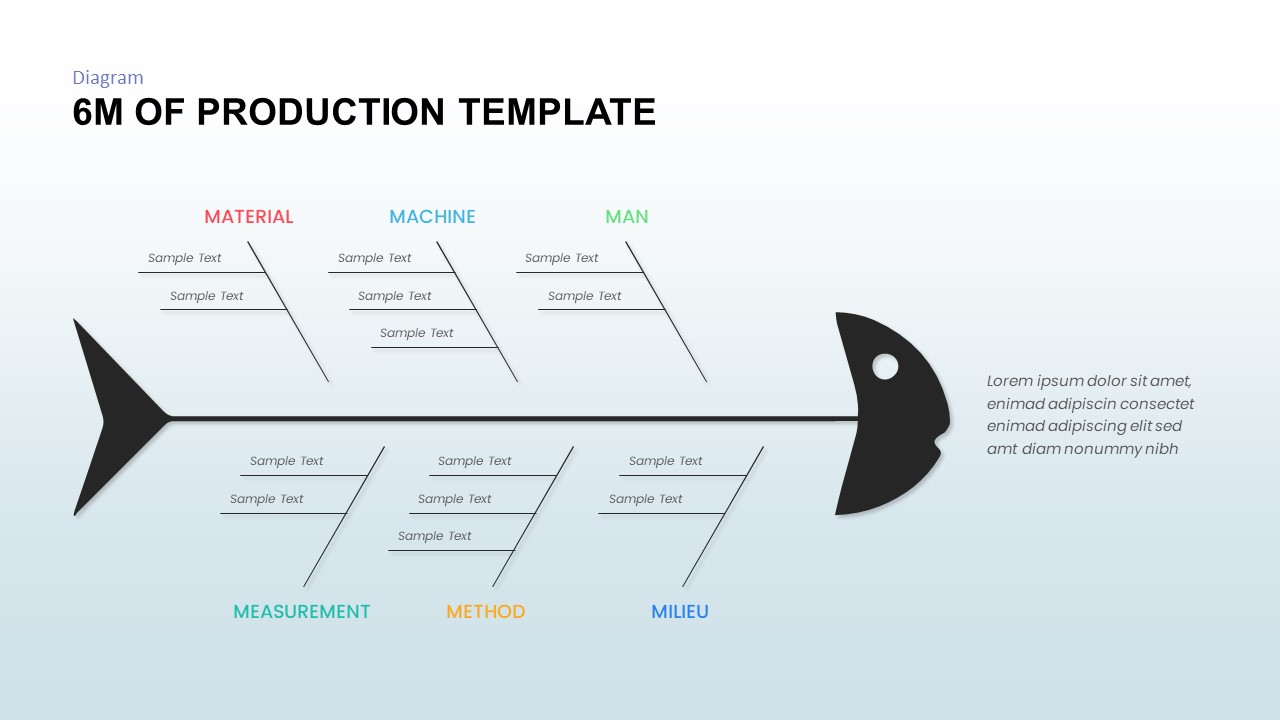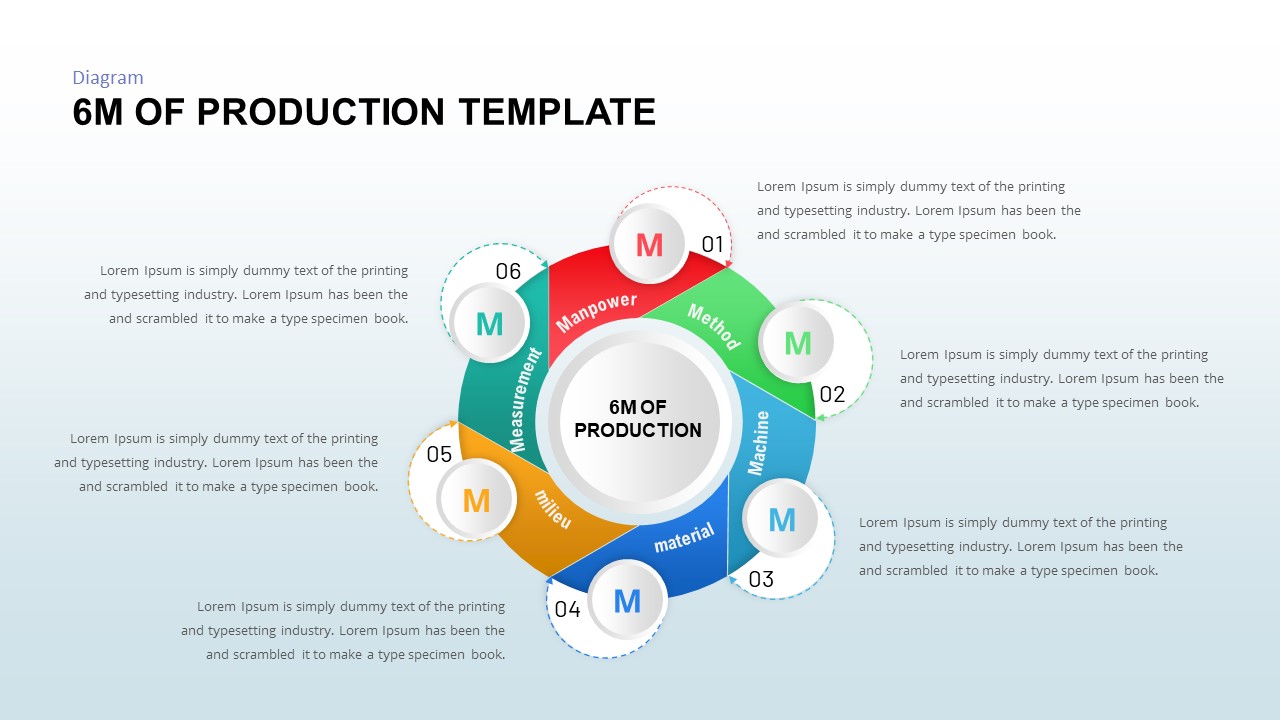6 M Analysis Fishbone PowerPoint Template


This 6M of Production template helps streamline the process of evaluating and improving production workflows through a comprehensive diagram and structured categories. The six key components—Manpower, Method, Machine, Material, Milieu, and Measurement—are visually represented in a circular or linear layout, allowing for a systematic breakdown of each element’s contribution to the production process. The vibrant color scheme clearly distinguishes each "M," ensuring that each area is immediately identifiable, making this tool ideal for operational audits, process analysis, or process improvement presentations.
The first design variation features a circular flow that links the six elements together in a harmonious cycle, emphasizing their interconnectedness. Another version presents the 6M as a fishbone diagram, showing how each factor contributes to the overall output. A third version organizes the information into a structured table, presenting each M characteristic, its description, and actionable insights, perfect for more detailed analysis or reporting.
This flexible template makes it easy to adjust each section according to your unique needs, whether you’re conducting a production review, building a quality control presentation, or optimizing manufacturing processes. The clear, concise layout also ensures that your findings are communicated effectively, fostering team collaboration and supporting strategic decision-making. Fully compatible with both PowerPoint and Google Slides, this template ensures smooth presentation flow across different platforms and devices.
Who is it for
This template is designed for operations managers, production teams, quality control experts, and industrial engineers who need to analyze, evaluate, or improve production workflows. It’s also ideal for business analysts and consultants working with clients in the manufacturing or operational industries.
Other Uses
The 6M of Production template can be repurposed for evaluating project management workflows, conducting risk assessments, or illustrating key performance indicators (KPIs) in business processes. It’s also useful for presenting step-by-step strategies for process optimization, resource allocation, or performance tracking.
Login to download this file

















































